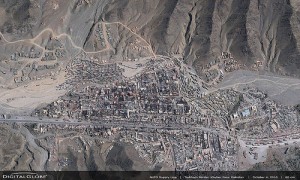Is It Possible 20 Were Killed at Panjwai, 3 by Another Soldier?
Update: See this post, which gives DOD’s latest update on the lack of military operations during the attack.
According to Amy Davidson, the explanation that Robert Bales’ 17th victim was an unborn child, which I noted here, has been debunked. That explanation was based on the presence of an unnamed Afghan male–listed as murder charge 5–in Bales’ charge sheet. But that explanation missed another unnamed victim–this one a female–under murder charge 4.
So let’s take a step back, and consider another possibility: that there are actually more than 17 victims, several of whom Afghans aren’t naming, and possibly at least one other solider known to have killed at least 3 Afghans as well. Here’s why I think that may be true.
First, when asked about the discrepancy in numbers yesterday, here’s how General John Allen answered.
Q: General, one quick housekeeping thing and then a question. There’s been some ongoing confusion over the jump in the number of casualties from 16 to 17. I was wondering if you might be able to discuss that briefly.
[snip]
GEN. ALLEN: I’m getting your one question in three parts here, so give me just a second. And if I miss one, let me — just tell me.
There is a — there was an increase in the number of what we believe to have been those who were killed tragically in this event. But this is — the number increased was based upon the initial reporting by the Afghans. And so we should not be surprised that in fact, as the investigation went forward, that an — that an additional number was added to that. So that is something that we understand and we accept, and as the investigation goes forward, we’ll get greater clarity in that.
[snip]
Q: (Off mic) — 16 versus 17, did the — just to be clear — did the Afghans miscount? Did someone die after the initial assessment?
GEN. ALLEN: We’ll have to let that come out in the investigation.
Note that he never says 17 is the correct number. Rather, he says the original number came from the Afghans, “there was an increase in the number,” and “we’ll have to let” the correct number “come out in the investigation.”
All that is perfectly consistent with the number being greater than the 17 the reporters are working with, which is based on Bales’ charge sheet.
So now compare Bales’ charge sheet with the two lists offered by Afghans.


